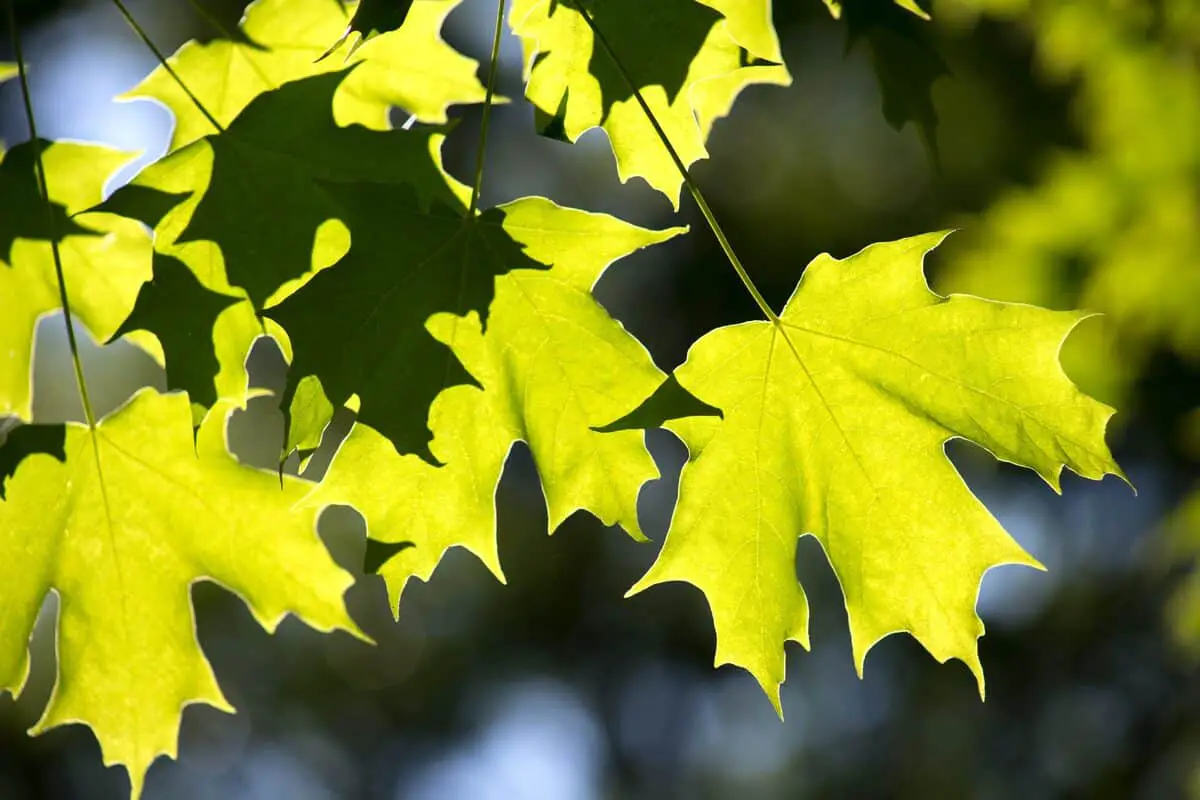
Nitrogen is an essential chemical for plants, since it is what stimulates their growth; However, as with everything in life, both the lack and excess of it can cause serious problems.
Nowadays, the most common thing is that the mistake of over-fertilizing them is made, which implies that they receive more nitrogen than they really need. But In this article I am also going to talk about what happens when this chemical is in short supply. or they don’t have it available.
Excess nitrogen in plants

Nitrogen is essential for plants to exist and perform their functions. As I said at the beginning, it is the main chemical that stimulates their growth, and this means that thanks to it they can increase their photosynthetic surface (ie: mainly green leaves and stems).
But when there is too much, they will start taking damage.
What are the symptoms or damage of excess nitrogen in plants?
The symptoms or damage that we are going to see will be next:
- The lower leaves tend to turn a much darker green.
- Then, the rest of the plant will become each time the same shade of green as said lower leaves.
- The plant can grow very large in a short time, but doing so will weaken its stems and foliage.
- As a consequence of all this, pests often appear.
How to eliminate excess nitrogen in plants?
It is not easy because depending on the state of health of the plant it may take time to recover if it does. But hey, yes we can try, and for that what we will do is suspend the subscriber for a few monthsuntil we see that completely healthy leaves sprout again.
Besides, In the event that we have the plant in a pot, it may be necessary to remove it from there, remove the loose soil and put a new one on it.. In this way, we will be able to reduce even more the amount of nitrogen from the substrate. Of course, this process must be done with care and patience, trying not to manipulate the roots too much.
On the other hand, If the pests have already appeared, we will eliminate them with a specific insecticideor with natural products such as diatomaceous earth, or water with lemon.
What causes excess nitrogen in plants?
Basically one thing: excess fertilizer, and fertilizers rich in nitrogen. Although more than these, the misuse we give these products does. All of these are sold in packages that always have a label attached to them specifying the dose and frequency of application, as well as the instructions for use.
And it is not like that for fun, but because an excess of nitrogen can be deadly for the plant, and harmful to the environment, since if that chemical is not absorbed by the plant, it will end up in the atmosphere. Once there, it will react with substances produced by sunlight, thus forming nitric acid. This acid is what makes up acid rain. In addition, it contributes to the worsening of the quality of the air we breathe.
Another serious problem that it causes is in the soil itself. A soil that has received excess fertilizer will need years (and a few ‘doses’ of organic fertilizers -responsibly- over a long period of time) to recover.
Lack or deficiency of nitrogen in plants

Nitrogen deficiency can also be a problem, and a serious one at that. That’s why, It is important that we know how to identify it in order to remedy it as soon as possible.
What are the symptoms or damage of a lack of nitrogen in plants?
If we think that nitrogen is essential for growth, the damages for its lack will be the following:
- The leaves turn yellow, starting with the lower ones.
- Leaf fall.
- New leaves tend to be smaller.
- Flowers may appear prematurely.
How to recover a plant that lacks nitrogen?
The solution is very simple: You just have to fertilize it with a fertilizer rich in nitrogen. Finding one like this today is easy, because what is sold the most are fertilizers that contain this chemical. However, it is important that you choose the one that is most suitable for your plant (that is, if you have a palm tree, for example, fertilize it with a fertilizer for palm trees and not one for citrus), and that you follow the instructions for use that you will find in the container.
Those leaves that are already yellow will not recover and will end up fallingbut the new ones should come out green and, therefore, completely healthy.
How to know if a soil has little nitrogen?

Image – Wikimedia Commons/Lythlady
Nitrogen is vital, so If a soil has little -or none- it will be a soil in which there will be very little variety of plants, and these will also tend to be small. For example, many carnivorous plants inhabit very poor soils, so much so that precisely the fact of evolving to become insect predators is nothing more than a survival strategy to get nitrogen -in this case animal nitrogen- and get ahead.
And it is that we all need a series of chemical substances to survive, and of course the plants are no less.


2 thoughts on “What are the damages caused by excess nitrogen in plants?”